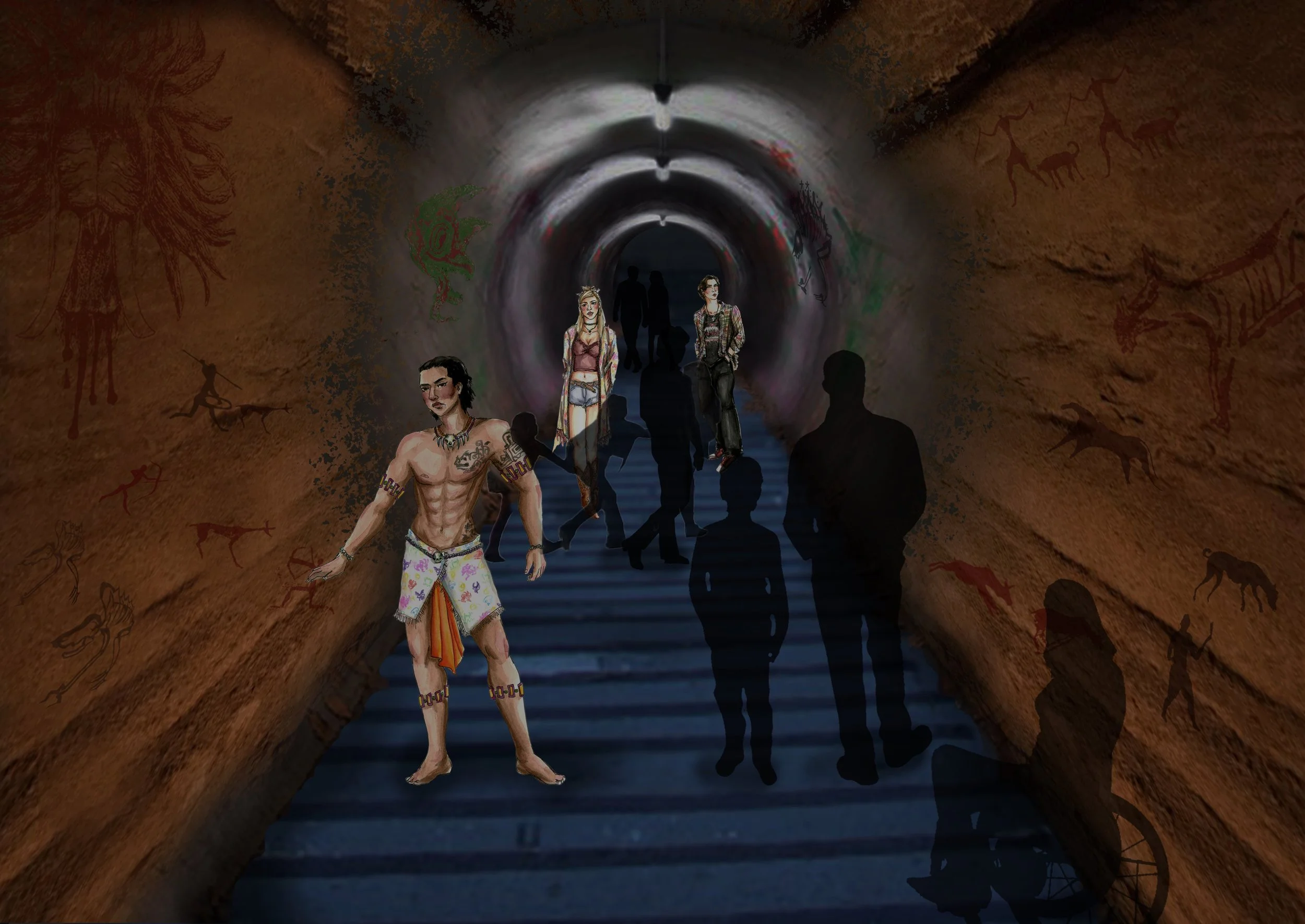
PQ: El Chupacabra
PQ: El Chupacabra
2023 PQ Studio: [un]common design project
Set Design: Nikolas Serrano, Lucas Becker
Costume Design: Maki Niikura
Concept:
El Chupacabra comes from the Spanish words chupar (“to suck”) and cabra (“goat”). This is the name of a hairless, feral creature that supposedly lives in Puerto Rico, Mexico, and parts of the United States. This seemingly dangerous, threatening beast has stories that tie it to livestock murder and is even used as a form of horror stories. El Chupacabra has a long history in American and Hispanic culture. The concept we have built our Uncommon design around is the lore of the El Chupacabra story, with a history rooted in hispanic cultures and storytelling, to create a devised piece from that relating the seemingly unwieldy beast to the immigration experience in the United States for foreigners and especially their families. We took this beast we feel we know so well from the tales we’ve been told and embodied that creature in a single character. The character of El Chupacabra in the frame of this story is seen in our eyes to be an outcast in America as for the history of the lore tends to lean to it being unwelcome. We want to relate that to the experience immigrants (specifically hispanics) go through when immigrating into the United States with the barriers of culture, language, and countless more
This project is also meant to have themes of alienation that speaks directly to the First or Second Generation of Children of immigrants; as for the creators of this piece are children of immigrants directly from the countries of Mexico, Cuba, and Puerto Rico. In this scenario there is a widespread feeling of not belonging to either culture, your parents, or the place that you live; thus becoming ostracized in both cultures. This is relevant in the tales of El Chupacabra because the entire population cannot agree on its form and make the beast out to be nothing more than a malevolent monster in both American and Hispanic lore. As the audience goes through these spaces and hear the slander on El Chupacabra character they see this character, an androgynous latin person of immigrant parents, make their way through and see just what someone like that goes through
This project is also meant to expose the long history of racism in America by the scenery and costumes of the locals to be a mashup of a lot of periods in American history.
In the end we hope the takeaway of this production is that the audience has seen through the eyes of a struggling outcast of their communities and realize that the El Chupacabra “beast” is not what they think.


Costume Design
The Chupacabra character is meant to be a androgynous amorphous outcast character. Apart from physically being ostracized during the production, the aim was to have it visually different. Our hope was that throughout this theoretical production, the townspeople would taint and mark the chupacabra with paint and with their words. this transformation would be a pivotal part of the chupacabra's journey.
the townspeople of the area are meant to represent a variety of people and times. the origin of the Chupacabra legend lies in Puerto Rico in the 1990's, but the creatures we fear have always been timeless. My aim was to include all of the areas that Chupacabra's are sighted, Puerto Rico, Mexico, and America to name a few. details like print and embroidery in the costumes themselves also depict drawings of the Chupacabra and what people fear the most of them.
Scene Design
The audience enters the space in a cave filled with historic paintings of the beast that slowly fade into graffiti depictions of the same beast on the walls of a concrete tunnel, thus establishing that this story could be anytime. The audience members track their way through a bar, a place where many people gather to drink and tell stories; a classroom, a place where children are taught hate and the stories tied to that; and end their journey gathered around a fire, a place of classic storytelling dating back to before recorded time. This is a look into the passage of time, and how sometimes hate and fear transcends moments, and weave's itself into the fabric of time.




![Main Street[73] updated.jpg](https://images.squarespace-cdn.com/content/v1/655797565bf2787551c65ecf/91a2ad78-7e96-45dd-9cc9-422519bd996c/Main+Street%5B73%5D+updated.jpg)

![fireside[98] updated.jpg](https://images.squarespace-cdn.com/content/v1/655797565bf2787551c65ecf/18421efb-4f5f-4c81-85b6-94aab90cb5e0/fireside%5B98%5D+updated.jpg)